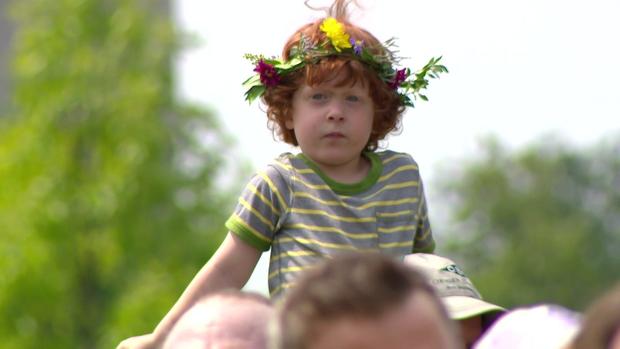What is the significance of the summer solstice?
MINNEAPOLIS – We are on the verge of the longest day of the year. The summer solstice will happen at 10 a.m. C.T. on Wednesday, June 21. It's a time many cultures feel is worth celebrating.
What is the significance of the summer solstice? Jeff Wagner learned why the astronomical occurrence is revered from pole to pole.
There's two types of long days. The first, when you're stuck somewhere you don't want to be for a long time like work, school, and the DMV. Then there's the actual long days based on how much daylight we get, with the lengthiest of them all on the horizon.
"It's an amazing day," said Thaddeus LeCoursiere, planetarium production coordinator at the Bell Museum in St. Paul.
What is the significance of the summer solstice?
"Astronomically speaking, it's a moment when the earth in the summer is tilted toward the sun, the Northern Hemisphere, the most that it ever does," he said.
The earth is tilted 23.5 degrees. It takes one year for the Earth to rotate around the sun. In June, thanks to that tilt, the Northern Hemisphere has its highest exposure to the sun, creating maximum daylight on the summer solstice.
"And of course on the opposite end of the earth, down south [the Southern Hemisphere], this is in fact the shortest day of the year," LeCoursiere said.
But no matter the hemisphere, the sun's motion is steady. It's how the event got its name. In Latin, "sol" means sun and "sistere" means to stand still. On the solstice, the sun will be at its most northern point.
"As we watch it, we can sort of see it stopping and pausing and we won't see too much of a change for several days. And then it will start going back down," he said.
Unlike the sun, people tend to get moving on this day.
"Like in Minnesota, Nordic countries in general, and Sweden specifically, we have long, dark winters," said Ingrid Nyholm-Lange, director of experience at the American Swedish Institute in Minneapolis.
It's why in Sweden, people celebrate Midsommar on the summer solstice. It's a gathering to reconnect with nature and honor the long days ahead, in part because of the country's history of farming. The solstice happens in the peak of the growing season.
"We were coming into this time of plenty," said Nyholm-Lange. "It's not that people lived in towns and villages [centuries ago], so much as they were separated out on their farms. And so by bringing together community, they could celebrate together."
At the American Swedish Institute, a days-long party is held on the third Saturday of June for Midsommar. Traditions like crafting flower head wreaths and dancing around the Maypole were most popular. It's not just Scandinavian countries that celebrate.
In England, expect crowds at Stonehenge, where the rock formation aligns with the sunrise on the longest day. No matter your culture, honoring the sun's impact on Earth and on our lives is a human connection shared worldwide.
"It doesn't have to be just one way. There are many different ways to celebrate," said Nyholm-Lange.
Minnesota will experience about 15.5 hours of daylight Wednesday. If you head north to the Arctic Circle, the sun won't ever set, meaning 24 hours of daylight.





